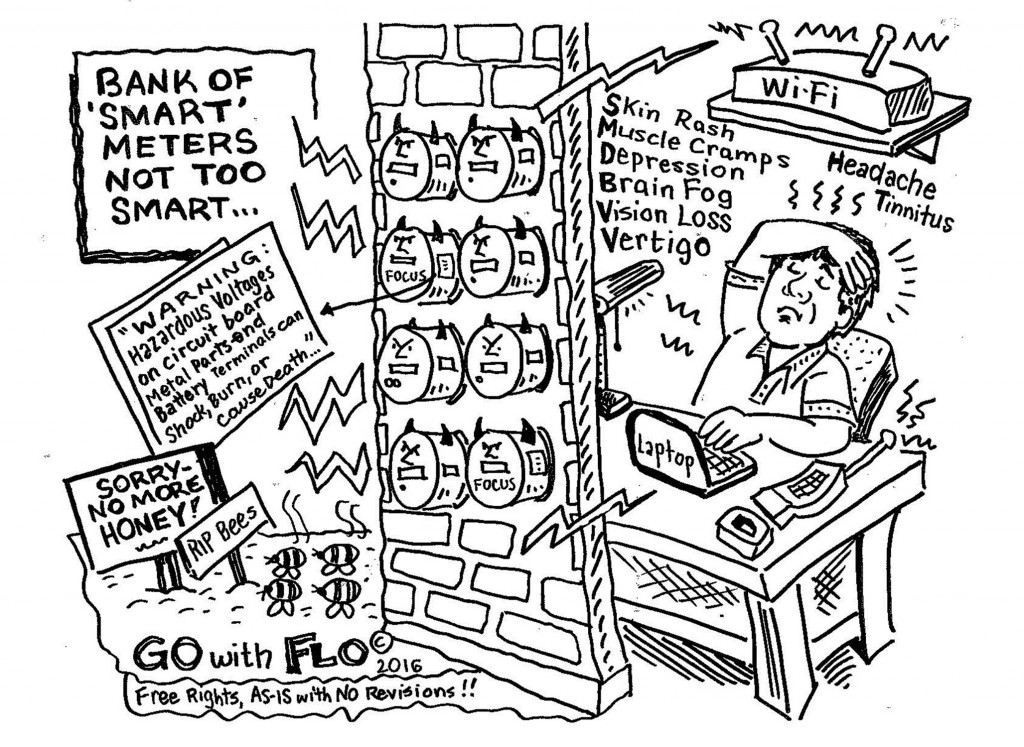Category: wi-fi
Scientists Challenge SCENIHR
 We are in an era of unprecedented psychological manipulation of the science on potential health effects of EMF and RFR.
We are in an era of unprecedented psychological manipulation of the science on potential health effects of EMF and RFR.
Over the last few years, the BioInitiative Working Group has worked many hours on the European Commission’s science reviews of EMF and RFR. What they say matters. It’s the expert committee for the European Union (EU) recommending whether EMF and RFR public safety limits are okay, or need substantial revision. You know where we stand on this. The limits are grossly inadequate in Europe and the US.
The European Scientific Committee on Emerging and Newly Identified Health Risks (SCENIHR) did a bad job of it in 2009, and has unsurprisingly disappointed us again in 2015. Through deceptive language tactics, the Committee has deliberately put out misinformation to erase what should have been clear findings of potential health effects of electromagnetic fields. Health effects that matter greatly to millions of regular people who want to know about EMF.
What’s their NAME?
The Scientific Committee for Emerging and Newly Identified Health Risks, right? Emerging (not proven). Newly identified (not conclusively demonstrated).
What is the NAME OF THEIR REPORT?
“Final opinion on Potential health effects of exposure to electromagnetic fields (EMF)” Not conclusively proven health effects.
What did they conclude?
That there are no conclusively proven biological effects.
How Could That Happen?
” While the scope of the Opinion [SCENIHR, 2015a] did include potential health effects, it was not SCENIHR’s objective to decide whether the possibility of an effect exists, as erroneously suggested by Sage et al. It should be noted that the term “risk” already accounts for probability of a harmful effect and that various levels”. (SCENIHR Leitgeb, 2015)
WHAT?
It would be just an academic farce if our lives didn’t depend on the outcome. But, we do. All around the planet, we depend on good advice from educated experts that are supposed to be independent thinkers and good analysts of what is a ‘potential health effect’. No amount of dust-kicking can obscure the basic fact that the SCENIHR failed to do what it was directed to do.
Read for yourselves. This is double-speak. The SCENIHR’S science review that has failed to carry out the central question asked of this Committee. This is an assessment on which the fate of billions of human beings depends, and upon which global health rests.
For SCENIHR to issue an unwarranted finding of ‘all clear’ by redefining the reporting terms and misreporting the evidence is bad for science, bad for the public and intensely bad for school children who are sitting in classrooms with WiFi all day, required to use wireless tablets for schoolwork. Read more: http://www.bioinitiative.org/rebuttal-emf-effects/
Cindy Sage
Smart Meters, Cell Towers, Antennas, and other Multi-Sources of Microwave Radiation
Katie Singer: Radiation Soup
Is Wi-Fi making you sick? CBS news report
International Scientists Appeal to U.N. to Protect Humans and Wildlife from Electromagnetic Fields and Wireless Technology
NEW YORK–Today 190 scientists from 39 nations submitted an appeal to the United Nations, UN member states and the World Health Organization (WHO) requesting they adopt more protective exposure guidelines for electromagnetic fields (EMF) and wireless technology in the face of increasing evidence of risk. These exposures are a rapidly growing form of environmental pollution worldwide.
“ICNIRP guidelines set exposure standards for high-intensity, short-term, tissue-heating thresholds. These do not protect us from the low-intensity, chronic exposures common today. Scientists signing the Appeal request that the UN and member nations protect the global human population and wildlife from EMF exposures.”
The “International EMF Scientist Appeal” asks the Secretary General and UN affiliated bodies to encourage precautionary measures, to limit EMF exposures, and to educate the public about health risks, particularly to children and pregnant women.
The Appeal highlights WHO’s conflicting positions about EMF risk. WHO’s International Agency for Research on Cancer classified Radiofrequency radiation as a Group 2B “Possible Carcinogen” in 2011, and Extremely Low Frequency fields in 2001. Nonetheless, WHO continues to ignore its own agency’s recommendations and favors guidelines recommended by the International Commission on Non-Ionizing Radiation Protection (ICNIRP). These guidelines, developed by a self-selected group of industry insiders, have long been criticized as non-protective.
The Appeal calls on the UN to strengthen its advisories on EMF risk for humans and to assess the potential impact on wildlife and other living organisms under the auspices of the UN Environmental Programme, in line with the science demonstrating risk, thereby resolving this inconsistency.
Martin Blank, PhD, of Columbia University, says, “International exposure guidelines for electromagnetic fields must be strengthened to reflect the reality of their impact on our bodies, especially on our DNA. The time to deal with the harmful biological and health effects is long overdue. We must reduce exposure by establishing more protective guidelines.”
Joel Moskowitz, PhD, of University of California, Berkeley, says, “ICNIRP guidelines set exposure standards for high-intensity, short-term, tissue-heating thresholds. These do not protect us from the low-intensity, chronic exposures common today. Scientists signing the Appeal request that the UN and member nations protect the global human population and wildlife from EMF exposures.”
International EMF Scientist Appeal: EMFscientist.org
Dr. David Carpenter talks about wireless cancer risks and what you can do to protect your family
Dr. David Carpenter is the co-author of the Bioinitiative Report and director of the Institute for Health and the Environment at the University of Albany. He talks about cell phones and brain cancer risk, children’s risk, high intensity pulses from smart meters, 60 HZ fields, radio towers, Obama supported wifi in schools and electrosensitivity.
He says, “the evidence is overwhelming” that cell phones increase your risk of brain cancer, and children are at 5 fold greater risk. He says, “Children are by far the most vulnerable.” Regarding wifi in schools, “everyone will be adversely affected.” The interview concludes with some solutions on what you can do to protect yourself and children. This video os no longer available.
